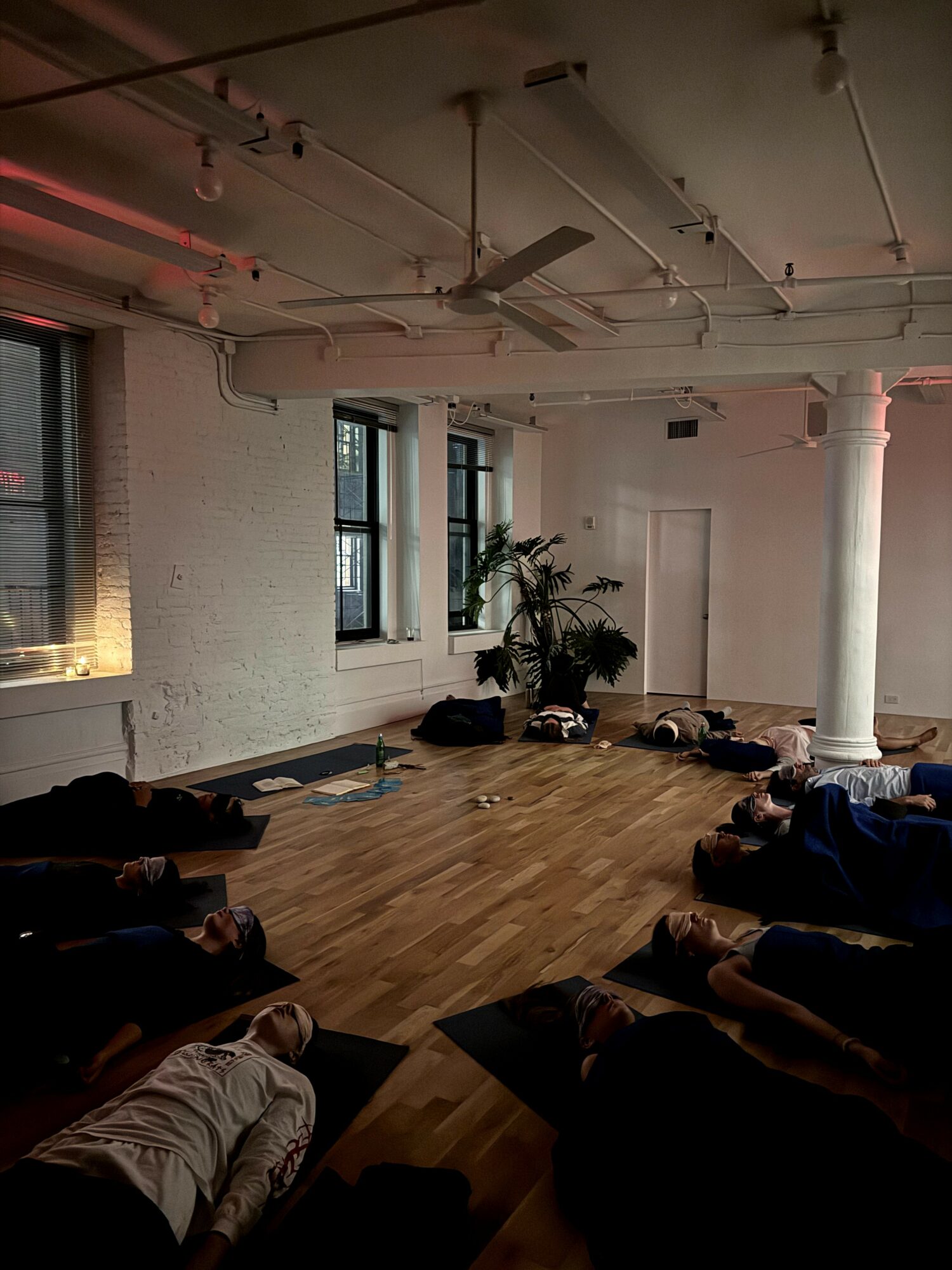

Today we’d like to introduce you to Ali Angle
Hi Ali, we’d love for you to start by introducing yourself.
My journey to becoming a therapist is a fairly simple one. In my early twenties, I sought therapy for the first time to confront existential fears and recognize patterns that I had been stuck in. Oh and of course to help me through my first heartbreak. Those sessions became the time I looked forward to every week—a space where I could process my emotions and just be myself. It was also during this time that my therapist suggested I consider becoming a therapist myself. Her encouragement planted the seed, and I started to see that this could be the work I was meant to do.
Before diving into grad school, I took a small step into the world of body-mind connection by becoming a yoga teacher. Yoga, like therapy, offers a dedicated space to connect with oneself, and through it, I learned the value of tuning into both the body and the mind. This perspective would later become an integral part of my therapeutic approach, helping me understand the deep link between physical sensations and emotional experiences.
After completing my studies at Antioch University, I began working at Antioch Community Therapy Services, where I gained hands-on experience providing therapy to individuals, couples and families. I then moved on to a treatment center for adolescents struggling with addiction and mental health. At the treatment center, I had the privilege of working in several roles, from group facilitator to primary therapist, and eventually as the clinical director. We supported adolescents struggling with addiction, mental health challenges, and trauma, providing a range of services depending on their needs. Some of the teens we worked with required after-school outpatient support, while others needed full residential care.
As a primary therapist and group facilitator, I led process groups, providing a safe space for the teens to explore their emotions, share their experiences, and build the skills needed to cope with their struggles. These groups were often centered on topics like emotional regulation, building healthy relationships, and managing cravings or triggers. I also worked one-on-one with teens to develop personalized treatment plans, helping them navigate issues such as anxiety, depression, trauma, suicidal ideation and substance abuse.
In addition to traditional therapy, we took a holistic approach by connecting kids to other resources that supported their recovery. This included getting them involved in support groups like Alcoholics Anonymous (AA) and offering Dialectical Behavioral Therapy (DBT) skills if needed. We also collaborated with other professionals, such as nutritionists, education consultants, and psychiatrists, to ensure that each teen received comprehensive care.
Can you talk to us a bit about the challenges and lessons you’ve learned along the way. Looking back would you say it’s been easy or smooth in retrospect?
The road to building my private practice has certainly not been entirely smooth. Leaving the structured world of treatment settings—where there was a strong sense of community and like-minded professionals—was a big transition. While I was excited about the independence, flexibility, and the opportunity to run my own business, I knew there would be challenges ahead.
One of the biggest struggles for me has been the marketing aspect. In therapy, we work so deeply with people’s emotions and personal growth, and there’s a profound magic that happens within those intimate sessions. It’s difficult to describe that feeling—what it’s really like to be part of someone’s healing journey—in a way that feels authentic for a marketing context. It’s not something that can easily be distilled into a catchy tagline.
What has truly been the most fulfilling part of building my practice, though, is learning to trust the energetics of referrals. Over time, I’ve found that when I lean into the process and trust that the right clients will come to me, they almost always do. Instead, I focus on doing the work I’m passionate about and staying true to the therapeutic space I create—and that energy seems to naturally attract the people who are meant to be in it. There’s something beautifully organic about that.
Alright, so let’s switch gears a bit and talk business. What should we know?
I am fully dedicated to my private practice, offering virtual therapy sessions with a focus on relationship dynamics, emotional and sexual intimacy, life transitions, stress, anxiety, depression, grief, family systems, adolescent issues, addiction, and life purpose.
I have a particular passion for working with teens during such a critical period of their development. It’s incredibly rewarding to guide them through the challenges of individuation and identity formation. It’s fun to use art, humor and culture to connect with teens and build trust. For most teens, therapy provides the only space to explore their feelings—whether related to family struggles, trauma, or even school crushes. Our work together creates a safe environment where they can express whatever is on their mind.
As a trauma-informed therapist, I understand how traumatic experiences can shape present emotions, behaviors, and relationships and shape an individual’s ability to cope. I integrate a somatic approach, recognizing the powerful connection between the mind and body. This involves helping clients become more aware of physical sensations, which can often reveal emotional blockages that words alone can’t access. Techniques like breathwork, grounding, and body awareness help clients reconnect with themselves and release stored tension.
Looking ahead, I plan to pursue a certification in somatic sex therapy. I’m excited to expand my practice to support clients dealing with sexual trauma, intimacy issues, sexual shame, and perinatal challenges, as well as help them reconnect with their own sexual energy and pleasure.
Is there something surprising that you feel even people who know you might not know about?
I have a secret (not-so-secret) love for dream analysis. I’m the friend to call if you’d like to share a dream. Much of my approach to this work is guided by Carl Jung. He believed that dreams are a way for our unconscious to communicate with us through symbols, imagery, and stories. Unlike the logical, rational ways we interpret our waking lives, dreams offer a unique pathway to connect with the deeper emotional landscape within us.
Similarly, I love to follow the clues our unconscious gives us in waking life. Jung described synchronicity as “the phenomenon in which seemingly random or unconnected events align in meaningful ways, offering deeper, symbolic significance”. He saw synchronicities as a form of communication between the unconscious and conscious mind. These coincidences can be seen as moments of alignment between an individual’s inner psychological world and the outer world. Jung believed these occurrences reflected a deeper, often unconscious, order in the universe, one that could offer insight into our personal growth and life journey.
Contact Info:
- Website: https://www.aliangle.xyz
- Other: https://www.psychologytoday.com/us/therapists/ali-angle-los-angeles-ca/1036595



Image Credits
Sky Ting NY














